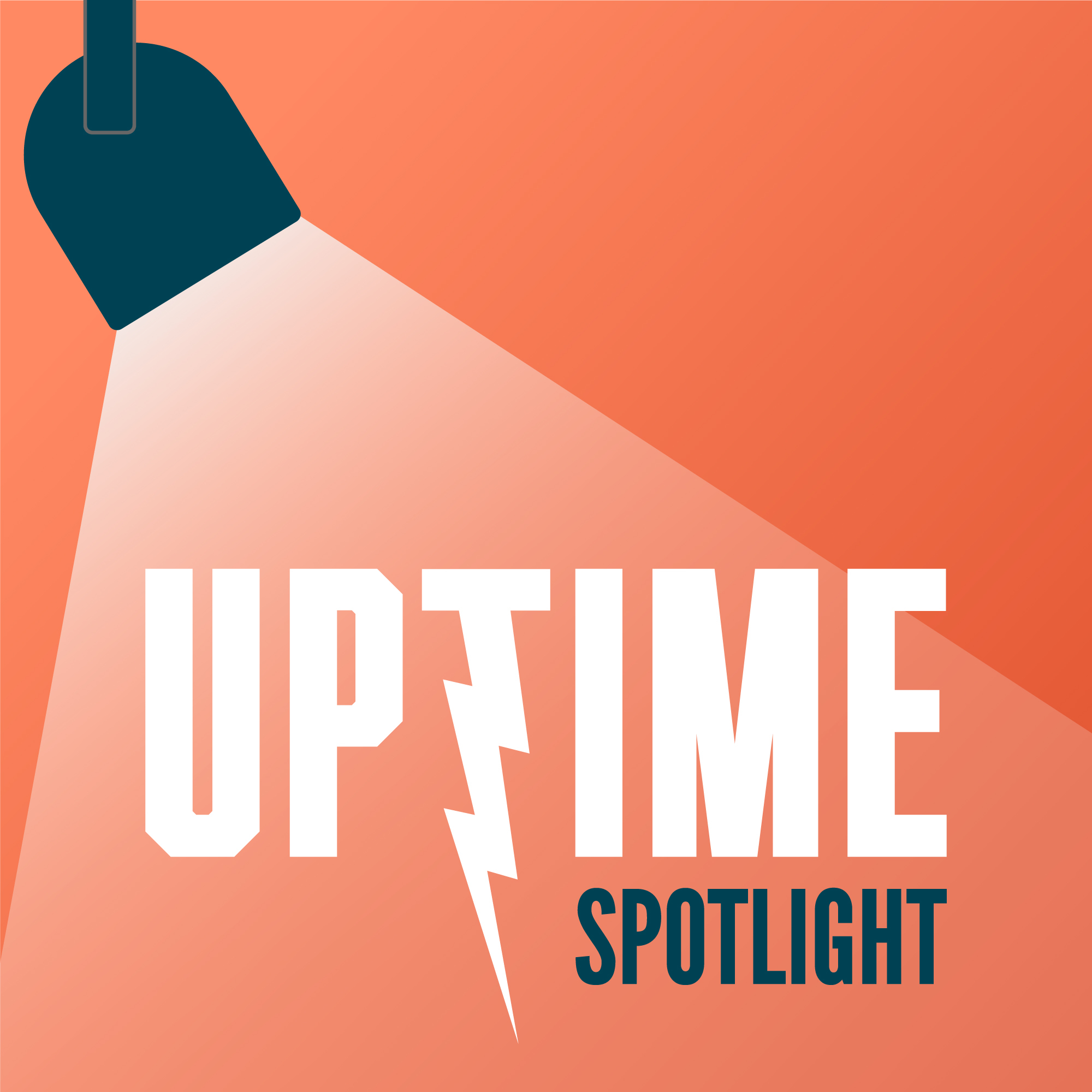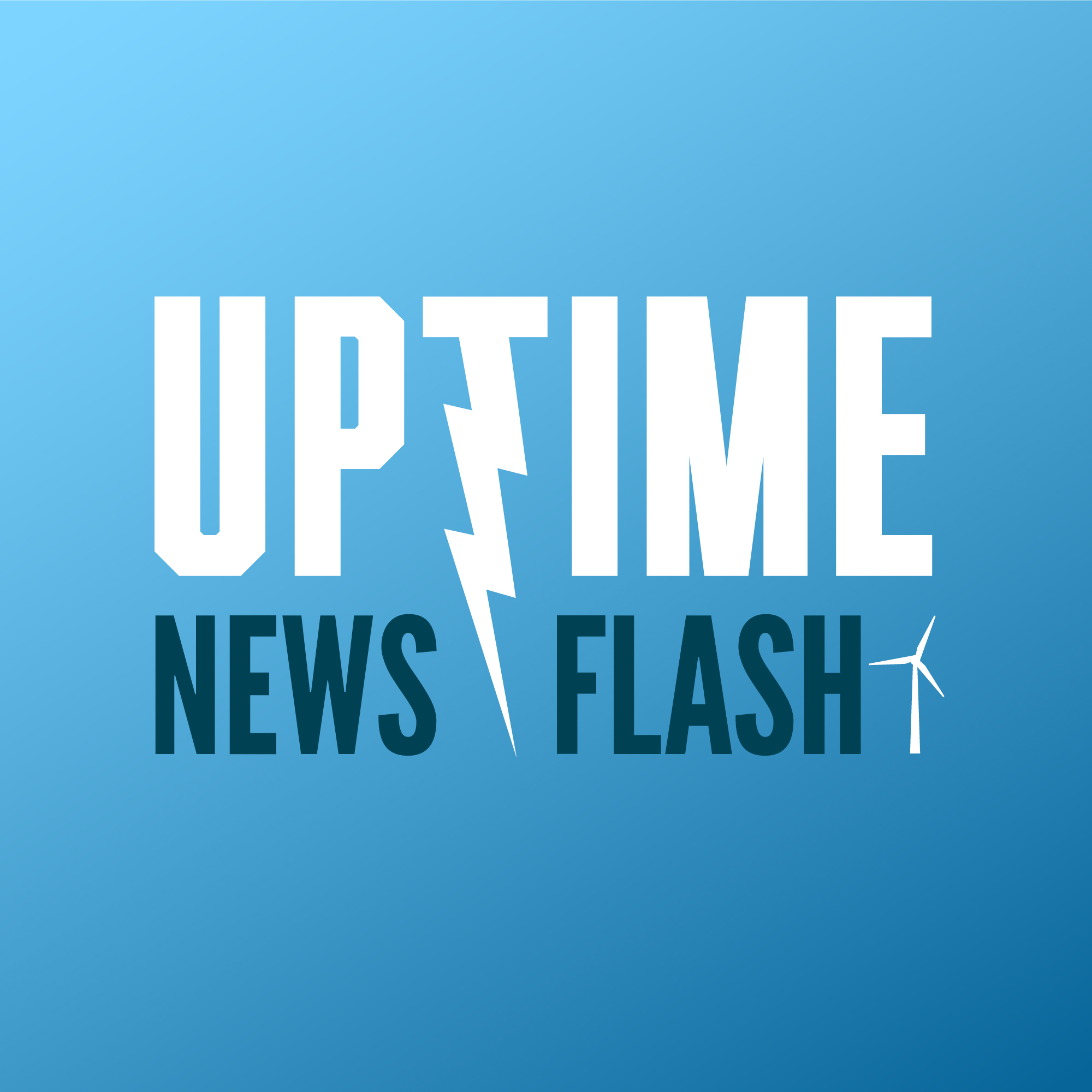Gulf Wind Technology Advances Wind Turbine Innovation
Update: 2025-08-07
Description
Allen Hall and Joel Saxum visit Gulf Wind Technology in New Orleans, where they sit down with CEO James Martin and CTO David King to explore the company's innovative work in wind turbine technology. The conversation delves into Gulf Wind's unique facility, their approach to solving industry challenges, and their role in developing wind energy solutions for the Gulf of Mexico.
Sign up now for Uptime Tech News, our weekly email update on all things wind technology. This episode is sponsored by Weather Guard Lightning Tech. Learn more about Weather Guard's StrikeTape Wind Turbine LPS retrofit. Follow the show on Facebook, YouTube, Twitter, Linkedin and visit Weather Guard on the web. And subscribe to Rosemary Barnes' YouTube channel here. Have a question we can answer on the show? Email us!
Allen Hall: Welcome to the Uptime Wind Energy Podcast. I'm your host, Allen Hall, along with my cohost, Joel Saxum. And we are in New Orleans, Louisiana, of all places, at Gulf Wind Technology. And we have James Martin, who is the CEO of Gulf Wind Technology, and David King, the Chief Technical Officer at Gulf Wind Technology.
And first of all, welcome to the podcast, guys. Great to be here. Yeah, thanks for coming to visit us. We've had a wonderful time here today going through the Gulf Wind Technology. offices and workspace. It is impressive. It's not something I knew we even had in the United States, honestly. And you guys have been working for a couple years on a variety of different projects and technologies.
And we had a meeting this morning, just full disclosure, about all the things that Gulfwind has been involved with. I'm like, whoa, all right, I didn't know that. Some of it is top secret still, some of it not top secret. James, let's just start with you. I think people in the U. S. don't have a lot of experience, haven't met you before, haven't worked with Gulfwind.
Can you just give us a brief background on what Gulfwind Technology is as a business?
James Martin: Certainly, yeah. Gulfwind Technology, we are all first principles, blades engineers essentially, first. OEM industry for a number of years. We've seen some of the challenges that the industry is up against today, and we like to think that we can predict maybe some of the challenges for tomorrow.
So with that team, we've been able to build assets, equipment get ourselves out there as problem solvers and offering technology solutions to basically problems that can reduce the cost of energy over time. It gets talked about a lot. We're going to talk about some of the assets we've invested in, but yeah, we've got reliability products that get involved with today.
The problems of today's market. We're really passionate about the products of tomorrow. So more performance projects for the future. And we love running projects. So we like, we specifically, we've been working in our region to open up or demystify, remove roadblocks for the Gulf of Mexico market.
Which have got some great technology problem statements in there
Allen Hall: Because that's where we first heard of gulfwind was with the work with shell gulfwind, right?
Yeah, that's It's a double edged sword and we had you on the podcast in a sense because we were talking about the first wind turbine being Installed in louisiana and gulfwind is involved with that.
James Martin: Yeah, I mean we really thought Because a lot of our challenges about how to get technology to products how can we demonstrate that we can take it off a desktop study in terms of a solution or an idea, and how can we show it works? How can we de risk that for our customers? So the first thing we thought is that we really want to invest put our money where our mouth is, make sure that we can design, make sure we can test on a sub component level, make sure we can actually spin anything we're talking about.
And yeah, demystify some of that technology, essentially. One of the things
Sign up now for Uptime Tech News, our weekly email update on all things wind technology. This episode is sponsored by Weather Guard Lightning Tech. Learn more about Weather Guard's StrikeTape Wind Turbine LPS retrofit. Follow the show on Facebook, YouTube, Twitter, Linkedin and visit Weather Guard on the web. And subscribe to Rosemary Barnes' YouTube channel here. Have a question we can answer on the show? Email us!
Allen Hall: Welcome to the Uptime Wind Energy Podcast. I'm your host, Allen Hall, along with my cohost, Joel Saxum. And we are in New Orleans, Louisiana, of all places, at Gulf Wind Technology. And we have James Martin, who is the CEO of Gulf Wind Technology, and David King, the Chief Technical Officer at Gulf Wind Technology.
And first of all, welcome to the podcast, guys. Great to be here. Yeah, thanks for coming to visit us. We've had a wonderful time here today going through the Gulf Wind Technology. offices and workspace. It is impressive. It's not something I knew we even had in the United States, honestly. And you guys have been working for a couple years on a variety of different projects and technologies.
And we had a meeting this morning, just full disclosure, about all the things that Gulfwind has been involved with. I'm like, whoa, all right, I didn't know that. Some of it is top secret still, some of it not top secret. James, let's just start with you. I think people in the U. S. don't have a lot of experience, haven't met you before, haven't worked with Gulfwind.
Can you just give us a brief background on what Gulfwind Technology is as a business?
James Martin: Certainly, yeah. Gulfwind Technology, we are all first principles, blades engineers essentially, first. OEM industry for a number of years. We've seen some of the challenges that the industry is up against today, and we like to think that we can predict maybe some of the challenges for tomorrow.
So with that team, we've been able to build assets, equipment get ourselves out there as problem solvers and offering technology solutions to basically problems that can reduce the cost of energy over time. It gets talked about a lot. We're going to talk about some of the assets we've invested in, but yeah, we've got reliability products that get involved with today.
The problems of today's market. We're really passionate about the products of tomorrow. So more performance projects for the future. And we love running projects. So we like, we specifically, we've been working in our region to open up or demystify, remove roadblocks for the Gulf of Mexico market.
Which have got some great technology problem statements in there
Allen Hall: Because that's where we first heard of gulfwind was with the work with shell gulfwind, right?
Yeah, that's It's a double edged sword and we had you on the podcast in a sense because we were talking about the first wind turbine being Installed in louisiana and gulfwind is involved with that.
James Martin: Yeah, I mean we really thought Because a lot of our challenges about how to get technology to products how can we demonstrate that we can take it off a desktop study in terms of a solution or an idea, and how can we show it works? How can we de risk that for our customers? So the first thing we thought is that we really want to invest put our money where our mouth is, make sure that we can design, make sure we can test on a sub component level, make sure we can actually spin anything we're talking about.
And yeah, demystify some of that technology, essentially. One of the things
Comments
In Channel







